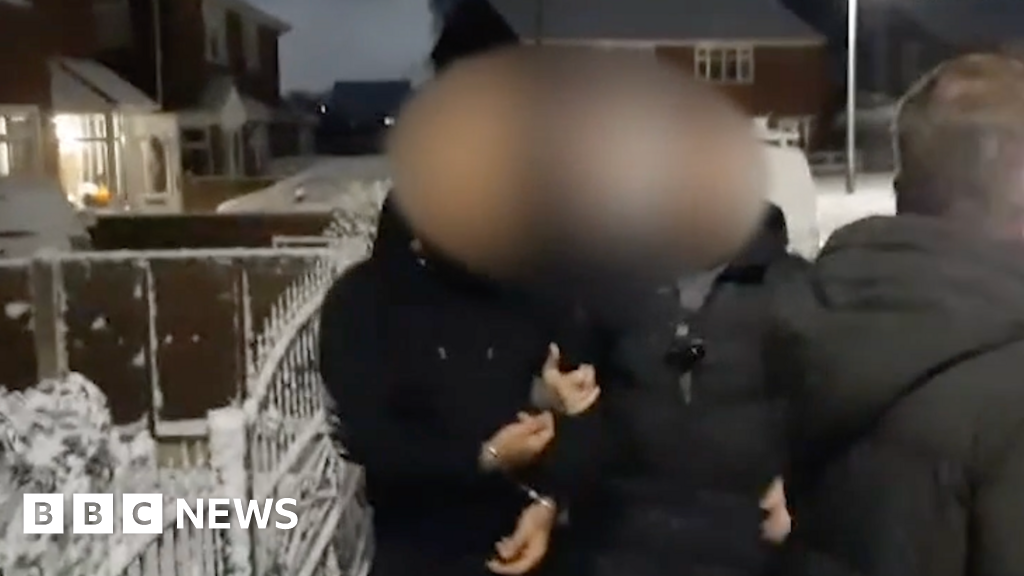This article includes accounts of rape and physical assault
A YouTuber called Pan-seug has reawakened public outrage over one of most horrific rape cases in recent South Korean history by naming and shaming some of the alleged perpetrators.
The Miryang gang rape case involves 44 men, believed to have repeatedly physically and sexually assaulted three girls between the ages of 13 and 16 over the course of 11 months in 2004.
Now, Pan-seug has been uploading a series of videos that identify some of the suspected assailants.
The videos have triggered a fierce debate, with some decrying them as vigilante justice and others praising what they see as appropriate punishment given that none of the 44 men were ever convicted of sexual assault.
"The general reaction has been positive," said Hyobin Lee, an adjunct professor of politics and ethics at Chungnam National University.
"If the judiciary had handled the case properly 20 years ago, these private sanctions might not have occurred," she told DW.
David Tizzard, an assistant professor of education at Seoul Women's University and a columnist for a Korean daily focusing on social affairs, has a similar view.
"Many today believe that justice should be served, that those who have wronged others should themselves face a similar situation," he said.
Danger of mistakes and collateral damage
But taking justice in one own's hand undoubtedly raises the risk of mistakes.
For example, the YouTuber claimed that a nail salon in Miryang was owned by the girlfriend of one of the suspects. The woman released a statement saying she had never known the man and would be taking legal action for the damage to her business and reputation.
One of the first men to be identified was working at his family's restaurant in the town of Miryang, about 40 kilometers (25 miles) north of the city of Busan, but the sudden media attention and negative reactions forced the family to close the restaurant. Another man has been fired from the car dealership where he worked while a third man has been suspended by his employer pending an internal investigation.
What do we know about the 2004 case?
The Miryang gang rape started with a 16-year-old girl being assaulted by multiple boys after agreeing to visit one of them in Miryang, a city in the country's southeast. The assailants also filmed the act to blackmail her. Terrified that the footage would be released online, she returned to Miryang on 10 occasions and, on the boys' orders, brought her 13-year-old sister and a cousin aged 16.
The two older girls were sexually assaulted, while it was never ascertained whether the 13-year-old was the victim of a similar sexual assault. The boys also extorted money from the girls. At least 44 male high school pupils — and potentially as many as 120 boys — were implicated in the scandal.
How you can stop revenge porn
When the rapes were eventually reported to the police, three boys were arrested. After protests from the victims, another nine were arrested and 29 charged.
But one of the most shocking aspects of the case was the response from relatives of the accused and many other local residents, who accused the girls accused of "seducing" the boys and threatened the victims' relatives.
The case took yet another dark turn when Miryang police refused a request from the girls to be questioned by a female officer, and male officers also suggested they had "enticed" the boys. Additionally, the leaking of information from the investigation led to the girls' identification.
Police forced to pay compensation
Authorities faced a compensation case over the officers' behavior. According to a report in the JoongAng Ilbo newspaper in 2007, one of the officers said: "You ruined the reputation of Miryang. The boys who would be leading the city in the future are all now arrested thanks to you… I am afraid my daughter will turn out like you."
The police were eventually ordered to pay compensation of KRW70 million (over $71,000 or €66,000 when adjusted for inflation in 2024) to two of the girls and their families. The damage, however, was already done. One of the girls was hospitalized for psychiatric treatment. The original victim has disappeared, according to South Korean media.
Her family responded to the recent release of the videos by saying they had not been informed in advance and wanted them to be removed from YouTube.
What happened to the suspects?
Prosecutors dropped the cases against most of the boys, with only 10 formally accused of group sexual assault and a sentencing recommendation of a maximum of four years, suspended for three years. The judges turned down even those lenient recommendations on the grounds of the boys' age and due to some of them already securing places at college or companies.
At the end, out of the 44 boys identified as assailants, five were sent to a youth detention center and none were criminally convicted.
"If the girl had come from a powerful, wealthy family or had been a very famous person, I believe the police would have acted completely differently," said Lee from Chungnam National University.
South Korean poet turns harassment experience into art
The professor also argues that the South Korean society has "become more misogynistic" over the last 20 years.
"Articles about women being sexually harassed or assaulted are invariably followed by comments blaming the victims," she said.
And if another incident comparable to the Miryang case occurred, the police "would be more cautious, but the behavior of the perpetrators' parents would not change."
"I also believe the judiciary would again fail to punish the perpetrators, citing their status as juveniles, just as they did in the past," she added.
Fury aimed at boys, parents
Independent researcher and writer Matt Van Volkenburg, has authored the influential "Gusts of Popular Feeling" blog for nearly two decades.
"It is worth remembering that at the time, people outside the Miryang police department were quite critical of the police's behavior and furious at the attitudes of the boys and their parents," he told DW.
And while there is "great interested in exposing these people and making them ‘pay'," he pointed out that YouTubers are being offered money to expose more of the assailants, "which leads into some very murky ethical waters."
Edited by: Darko Janjevic
Before you leave: Every Friday, the DW Asia newsletter delivers compelling articles and videos from around the continent right to your inbox. Subscribe below.

 5 months ago
16
5 months ago
16








